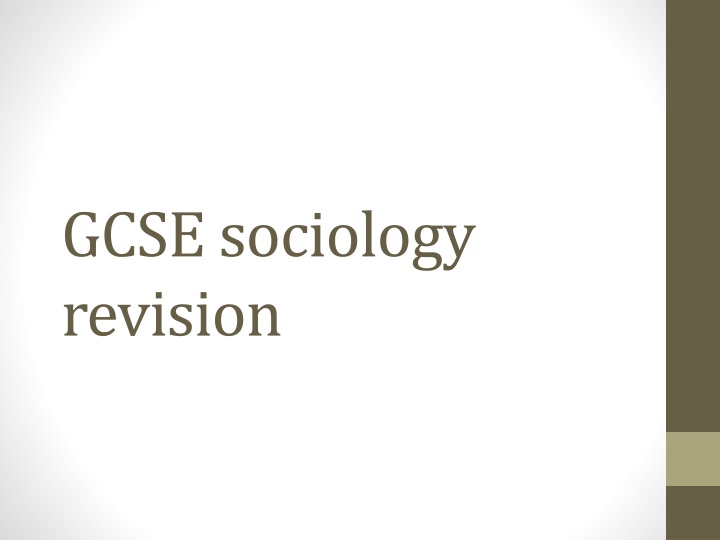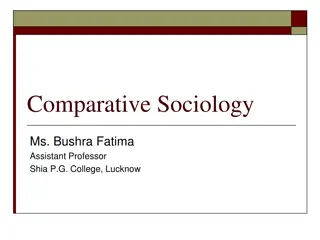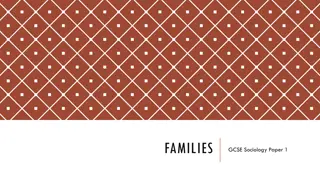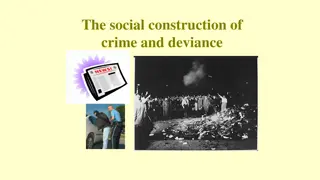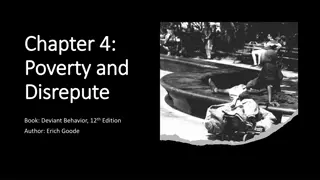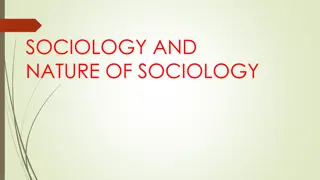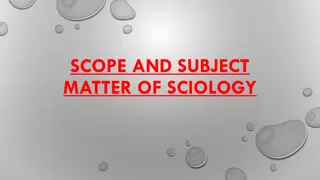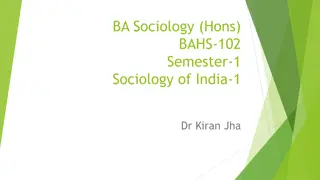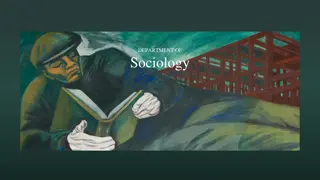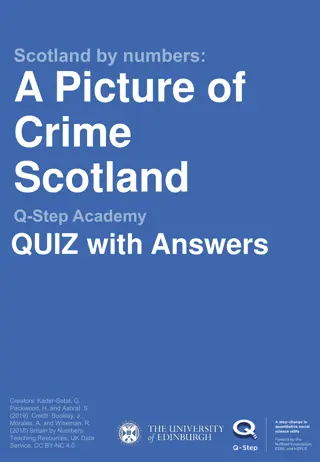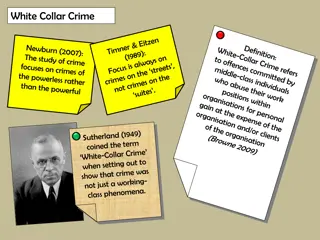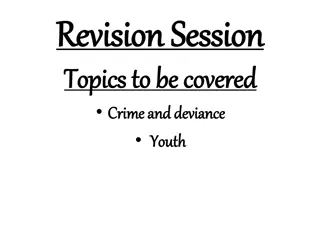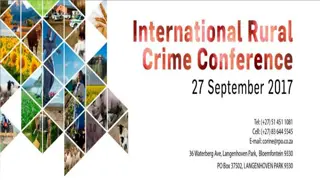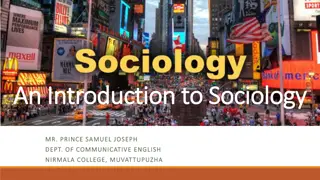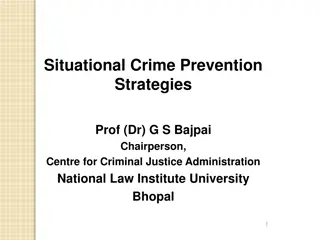GCSE Sociology Revision - Crime and Deviance Overview
In GCSE Sociology Revision, explore key topics such as defining crime and deviance, rules for social order and control, explanations for criminal behavior, measuring crime, and factors related to age and crime. Understand concepts like conformity, social control, family background, subcultures, measuring crime through official figures, victim surveys, and self-report studies. Dive into the reasons behind youth crime and societal perceptions. Utilize visual aids and explanations for effective revision.
Download Presentation

Please find below an Image/Link to download the presentation.
The content on the website is provided AS IS for your information and personal use only. It may not be sold, licensed, or shared on other websites without obtaining consent from the author.If you encounter any issues during the download, it is possible that the publisher has removed the file from their server.
You are allowed to download the files provided on this website for personal or commercial use, subject to the condition that they are used lawfully. All files are the property of their respective owners.
The content on the website is provided AS IS for your information and personal use only. It may not be sold, licensed, or shared on other websites without obtaining consent from the author.
E N D
Presentation Transcript
GCSE sociology revision
1. Crime and Deviance Defining crime and deviance Rules, social order and social control Explanations for crime Measuring crime Age and crime Gender and crime Ethnicity and crime Locality and crime
a.Definingcrime and deviance Crime = law breaking Deviance = not conforming to norms and values Deviance is socially constructed = depends on time (in history), Place, culture, who doing it etc
b. Rules, social order and social control Conformity = fitting in/obedience = social order/predictable Sanctions Positive = rewards Negative = punishment Social control Formal = written rules/laws = agencies carry this out (police, courts, teachers etc) = punishment Informal = unwritten = social pressure (ridicule/ignore/ gossip)
c.Explanationsfor criminal behaviour 1.Family background Socialisation Role models Lack of discipline Neighbourhood 4. Subculture gang Peer pressure Frustration Source of identity Belonging Rebellion 5. Marxist Capitalism = greed Media advertising Jealousy/frustration 2.Opportunity Structure Career path Role models 6.Labelling Stereotyping Self concept Selective policing Biased courts Media amplification 3. Deprivation Poverty Jealousy/frustration
d. Measuring crime a) Official crime figures = annual/Home Office Help police target resources/spot trends/advise public Problems of non-detection/non-reporting/non-recording NON-REPORTING = trivial/no trust/fear of reprisal/private matter b) Victim Surveys = people list crimes against them Overcome problem of non-reporting Reveal DARK FIGURE OF CRIME = lots more than official figures c) Self-Report Studies = people list crimes they have done Show that m/c and females commit more crime Challenges stereotype Problems exaggeration/under-reporting
e. Age and crime Why are youth seen as a problem? Media portrayal = folk devil Media moral panic (hoodies) Seen as disrespectful, trouble ASBO, acohol/drugs, knife crime Young people commit most crime Youth crime = juvenile delinquency/delinquents Factors causing youth crime Peer pressure Frustration Seek excitement Poor discipline Labelled by society and treated unfairly Strategies ASBOS Dispersal orders Tagging Fining parents
f. Gender and crime More males in prison Reasons why less girls involved in crime: Gender role socialisation Parental expectations (& control of girls) Less opportunities for girls Macho image/peer pressure = boys Stereotyping and labelling = girls let off (chivalry) Why more girls getting involved in crime? Less chivalry Changing roles = more opportunities More women in poverty (with less male support)
h. Crime and ethnicity More Afro-Caribbean men in prison Why are so many in prison? Unemployment and poverty = frustration Racism in society = unemployment Poor socialisation and values (Cultural = attitudes/lifestyle) Police racism/biased courts = stereotyping and more arrests
i. Crime by locality Less crime in rural areas because: Less poverty Less overcrowding More neighbourly/sense of community People keep an eye on each other (informal social control) Strangers/outsiders stand out Better neighbourhood watch groups
